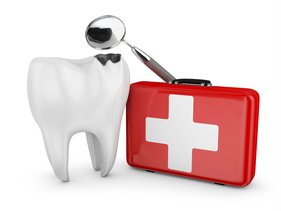
Understanding Emergency Dentistry: Immediate Oral Care in Critical Situations
Emergency dentistry plays a crucial role in providing immediate oral healthcare to individuals facing urgent dental issues. When unexpected dental problems arise, timely intervention can make a significant difference in preventing further complications and alleviating pain.
Understanding the scope of emergency dentistry, recognizing dental emergencies, and knowing how to respond appropriately can help individuals navigate critical situations effectively.
Definition and Scope of Emergency Dentistry
Emergency dentistry encompasses the provision of immediate dental care to address urgent oral health issues. Unlike routine dental visits, which focus on preventive care and maintenance, emergency dental services prioritize the prompt treatment of acute conditions that require immediate attention.
These may include severe toothaches, broken or knocked-out teeth, dental abscesses, soft tissue injuries, and excessive bleeding.
Distinguishing between dental emergencies and routine dental care is essential. While routine dental appointments focus on preventive measures and minor dental issues, emergency dentistry addresses sudden and severe conditions that require urgent intervention to prevent further damage or alleviate pain.
Types of Dental Emergencies
Several common dental emergencies require immediate attention. These include:
Toothaches: Intense or persistent tooth pain may indicate underlying issues such as dental decay, infection, or trauma.
Broken or Cracked Teeth: Fractured teeth can cause significant discomfort and may require immediate repair to prevent further damage.
Knocked-Out Teeth: Avulsed teeth should be treated as emergencies to maximize the chances of successful re-implantation.
Dental Abscesses: Abscesses are localized infections characterized by swelling, pain, and pus formation, requiring prompt treatment to prevent the spread of infection.
Soft Tissue Injuries: Trauma to the gums, lips, cheeks, or tongue can result in profuse bleeding and may necessitate immediate care.
Severe Bleeding: Excessive bleeding from the gums or oral tissues may indicate underlying dental issues or trauma and requires immediate attention.
Less common dental emergencies may include dislodged dental fillings or crowns, orthodontic emergencies such as broken wires or brackets, or complications arising from recent dental procedures.
Symptoms and Signs of Dental Emergencies
Recognizing the signs of a dental emergency is crucial for prompt intervention. Symptoms indicating the need for emergency dental care include:
Severe or persistent tooth pain
Swelling or inflammation of the gums or face
Bleeding from the mouth or oral tissues
Loose or knocked-out teeth
Visible damage to teeth or dental restorations
Signs of infection such as fever or swelling with pus discharge
It's essential to understand the severity of these symptoms and seek immediate treatment when necessary. Delaying care can exacerbate pain and lead to further complications, including the spread of infection or permanent tooth loss.

Immediate Treatment Procedures in Emergency Dentistry
When faced with a dental emergency, swift action is paramount to address the issue and mitigate discomfort.
Emergency dental care is initiated with a comprehensive assessment aimed at identifying the problem and easing pain. Various pain management strategies, including local anesthesia or prescribed medications, are employed to alleviate discomfort effectively.
Moreover, interim measures such as temporary fillings or splints may be applied to stabilize damaged teeth, providing temporary relief until a permanent solution can be executed.
The course of action taken during emergency dental care largely depends on the nature of the situation at hand. Urgent procedures such as emergency tooth extractions, root canal therapy, or dental restorations may be necessary to resolve the issue promptly.
In instances of dental infections, swift action through antibiotic therapy or abscess drainage becomes imperative to eradicate the infection's source and prevent further complications from arising.
Preparation for Dental Emergencies
While unforeseen dental emergencies cannot always be averted, individuals can adopt preventive measures to minimize their vulnerability to such occurrences:
Adherence to meticulous oral hygiene practices, including regular brushing, flossing, and routine dental examinations, aids in averting potential dental emergencies.
Employing protective gear during sports or recreational activities serves as a preventive measure against dental trauma.
Abstaining from habits like chewing on hard objects or utilizing teeth as tools mitigates the risk of dental fractures or injuries.
Prompt addressing of underlying dental concerns through timely treatment can pre-emptively thwart their escalation into emergency situations.
What to Expect During an Emergency Dental Visit
Upon seeking emergency dental assistance, patients can expect a thorough evaluation aimed at comprehensively assessing the issue's severity and devising an appropriate treatment plan.
Clear communication of treatment options and recommendations is prioritized, considering the patient's preferences, medical history, and financial constraints. Transparent discussions regarding cost implications and potential insurance coverage ensure informed decision-making on the patient's part.

Importance of Timely Response and Follow-Up Care
Timely intervention in emergency tooth pain is pivotal in forestalling further complications and preserving oral well-being. Delaying treatment escalation can exacerbate symptoms, intensify discomfort, and necessitate more invasive interventions subsequently.
Additionally, diligent adherence to post-treatment directives, encompassing medication adherence and attendance of scheduled follow-up appointments, is indispensable in facilitating optimal recovery and long-term oral health preservation.
Maintenance and Repairs
Following emergency dental interventions, adherence to specific maintenance protocols is imperative to uphold the durability and efficacy of dental restorations. Distinct maintenance approaches may be warranted for different types of dental fillings, such as white fillings and amalgam.
Acquainting oneself with what is an emergency dentist and diligently adhering to prescribed care practices serves to avert potential complications and prolong the longevity of dental restorations.
Emergency Dentistry at Skymark Smile Centre
At Skymark Smile Centre, we recognize that dental emergencies can occur unexpectedly and require immediate attention. Our dedicated team of experienced professionals is here to provide timely and effective emergency dentistry services to address your urgent oral health needs. Whether you're dealing with severe tooth pain, a broken tooth, or any other dental emergency, we are committed to delivering compassionate care and alleviating discomfort as quickly as possible. With state-of-the-art equipment and advanced techniques, we strive to diagnose and treat your emergency with precision and efficiency, restoring your oral health and peace of mind. If you're experiencing a dental emergency, don't hesitate to contact Skymark Smile Centre for prompt assistance and expert care. We're here to help you when you need it most.

